Equipment
...now browsing by category
Tuesday, January 13th, 2015
Here are a few more shots from the first time out with my Industar 210mm large format lens. I only took six sheets of film with me and I used two sheets on one of the shots because the light was changing and I decided to try out a greater depth of field on the second sheet. I ended up preferring the light on the building in the first exposure so that’s the one I’ve posted here.
[Tech info:] Graflex Speed Graphic, Industar 210/f4.5 lens, Kodak Plus-X Aerographic film, processed in Kodak HC110 1+31 for 6 mins.
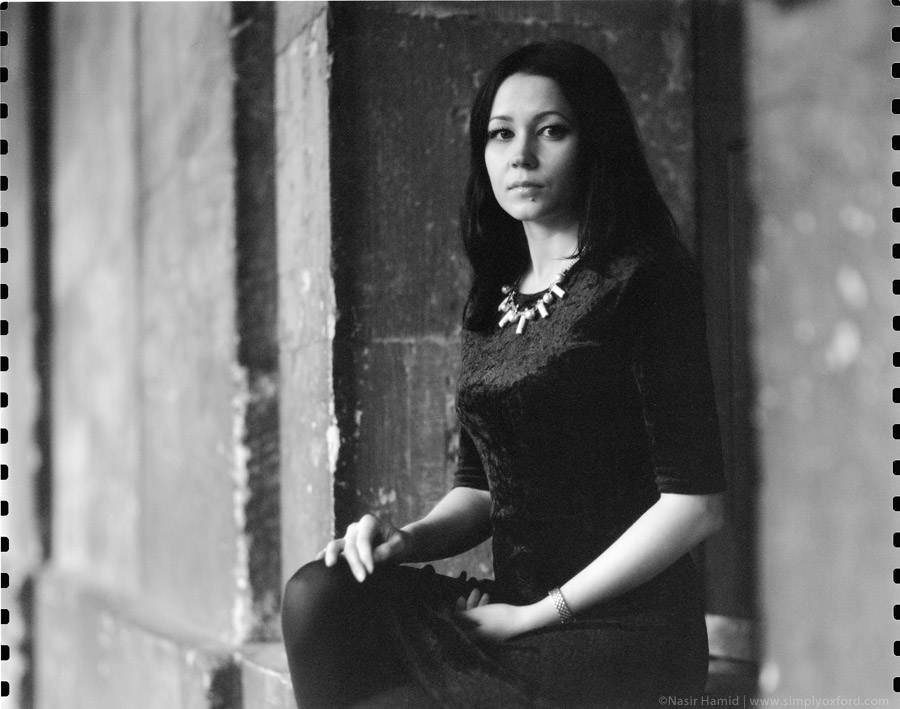


Posted in Architecture, Equipment, Oxford, Photo shoot, Portrait | No Responses »
Tags: 5x4, aerographic, black&white, film, graflex, hc110, industar, oxford, plus-x, portraits
Saturday, January 10th, 2015
This afternoon I visited Magdalen College to test out a new (old) lens I recently fitted to a lens board for my Speed Graphic and here is the first test shot made on Fuji FP-100C instant pack film. I also took some b&w sheet film with me and those shots will follow at a later time. The beauty of FP-100C is being able to bleach the black carbon backing from the back and ending up with an almost large format sized negative. This shot was made late in the afternoon as the light was fading and I used the slowest shutter speed on my Speed Graphic (1/30th) knowing that the print would be a little on the under-exposed side but also knowing that the negative gives you an extra 2 stops of exposure. It’s nice to get two shots for the price of one – the only instant film that does.
[Tech info:] Speed Graphic 5×4, Industar 210/4.5 lens, Fuji FP-100C instant pack film.

Neg
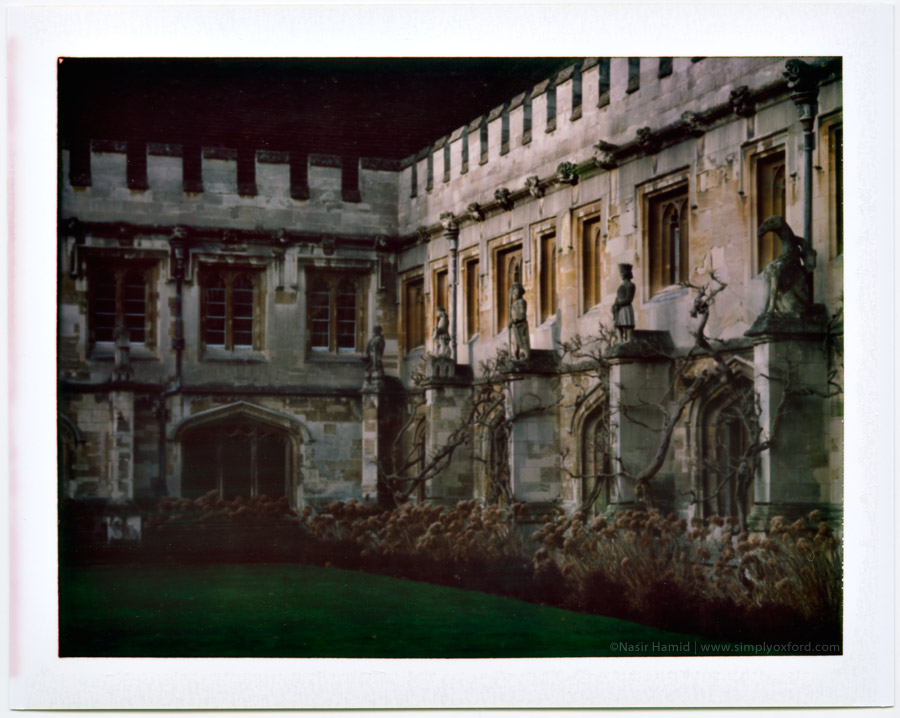
Print
Posted in Architecture, Equipment, film, Oxford | No Responses »
Tags: 5x4, film, fp100c, fujiroid, graflex, industar, magdalen college, oxford, speed graphic
Sunday, November 9th, 2014
These shots were made during my lunch break to test a wide-angle lens I picked up for my Leica M2, it’s a Voigtlander Nokton 35/1.2 II. A couple of years ago my friend Benedict Campbell bought this same lens and the first place he went to test it out was the Natural History Museum in Oxford so I thought it appropriate that I should do the same. Not only are the light levels inside perfect to test out such a fast lens but there are also lots of interesting things to photograph as well as lots of people. The film I used was an expired roll of Ilford FP4 but there was no box with it so I don’t know how old it was. The grain seems heavier than I would expect so perhaps it was quite old. On my way back to my office I stopped off at Clements & Church tailors on Little Clarendon Street to use up the last few frames with Ian who is always obliging.
[Tech info:] Leica M2, Voightlander Nokton 35/1.2, Ilford FP4 (expired), processed in Kodak HC110 1+31.
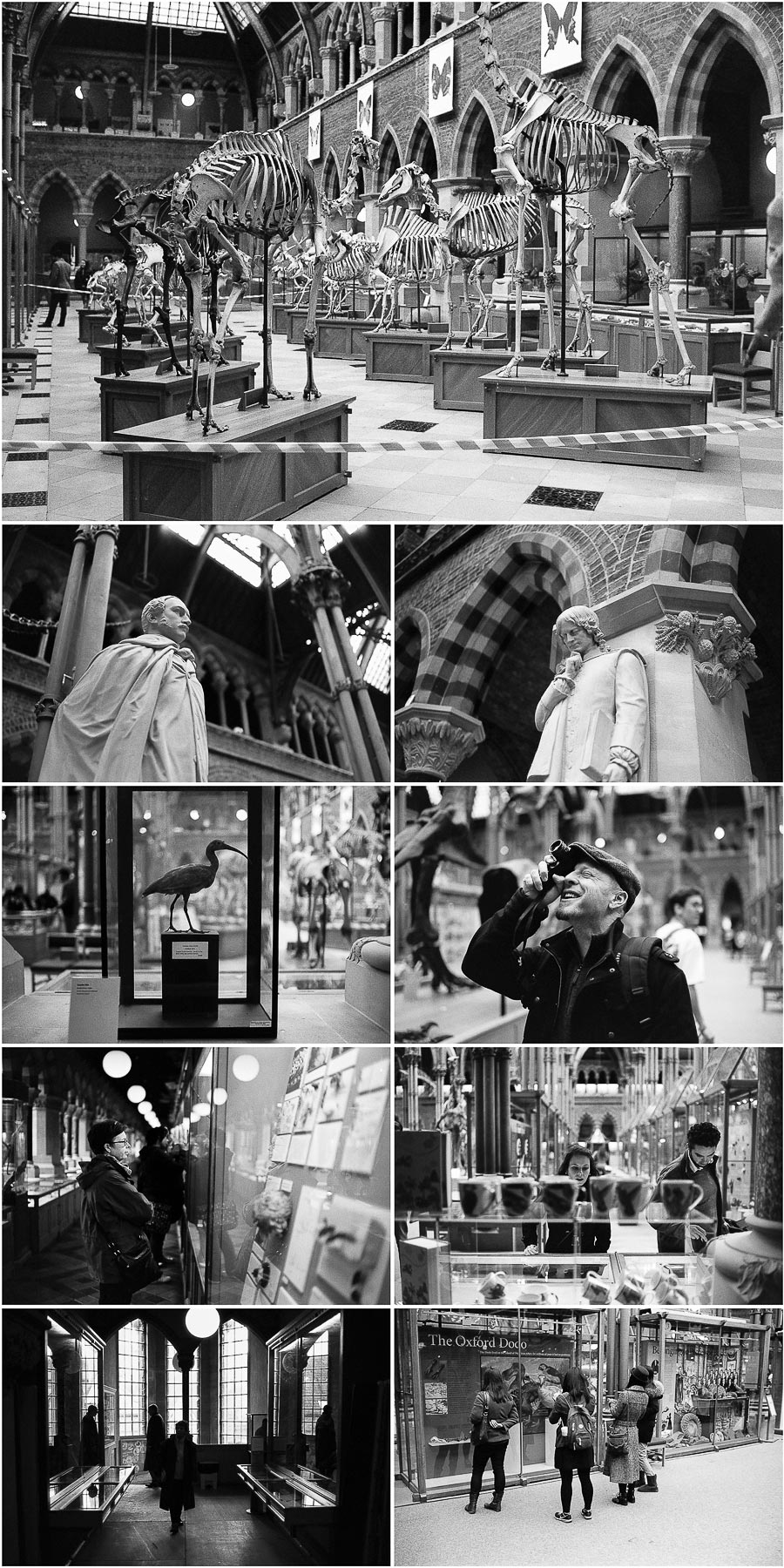
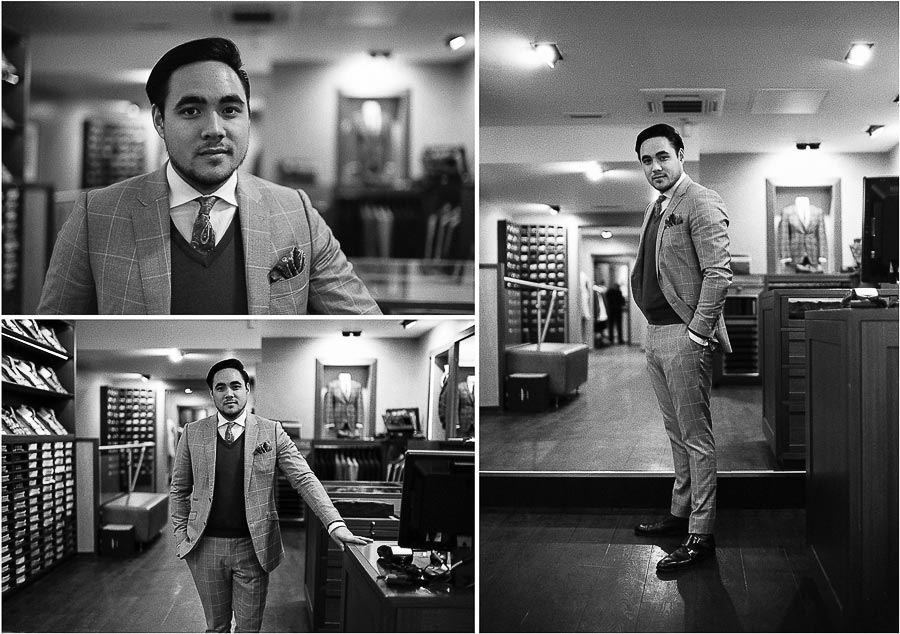
Posted in Equipment, film, Oxford, People | 4 Responses »
Tags: black&white, film, fp4, hc110, leica, m2, natural history museum, oxford, pakon
Tuesday, March 11th, 2014
It’s been a while since I’ve done any photography of the Oxford tailor’s at Clements & Church because of all the wet weather we’ve had but at the moment we seem to be having a dry spell so I decided to do a couple of test shots with using a flash connected to one of my Polaroid Land camera’s which I’ve never done before. Despite it being an overcast day it was difficult to overpower the ambient light because the flash sync speed on this camera is only 1/60 but overall I like the look. My first test shot with Hugo looked a little over-exposed so I stopped the lens down 1 stop for Ian’s shot – you can see a slight difference in the depth of field of the background.
[Tech info:] Polaroid 190 Land camera, Nikon SB800 speedlight, Fuji FP-100C instant pack film (expired).

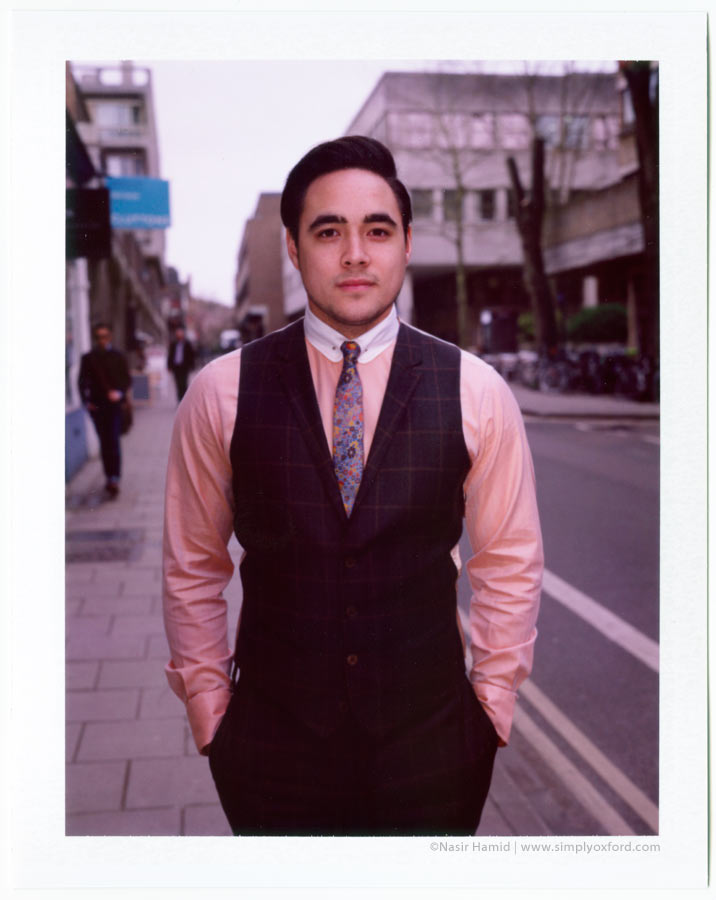
Posted in Equipment, Fashion, film, Oxford, Portrait, Street portraits | No Responses »
Tags: 190, clements, fp100c, oxford, pack film, polaroid, tailors
Wednesday, October 23rd, 2013
A bit of a mixed bag of pictures for this post. Firstly there are shots from a family woodland walk a few weeks ago and then there are some shots from my lunch time photowalk. These are all from the same roll of Agfa Vista 200 film which is for sale at Poundland for £1/roll. This post is mainly to show that this film is the real deal and capable of some great results. It’s a myth that shooting with film is expensive.
[Tech info:] Nikon FM2, 50/1.4 lens, Agfa Vista 200 film, dev & scan by ASDA in Swindon.
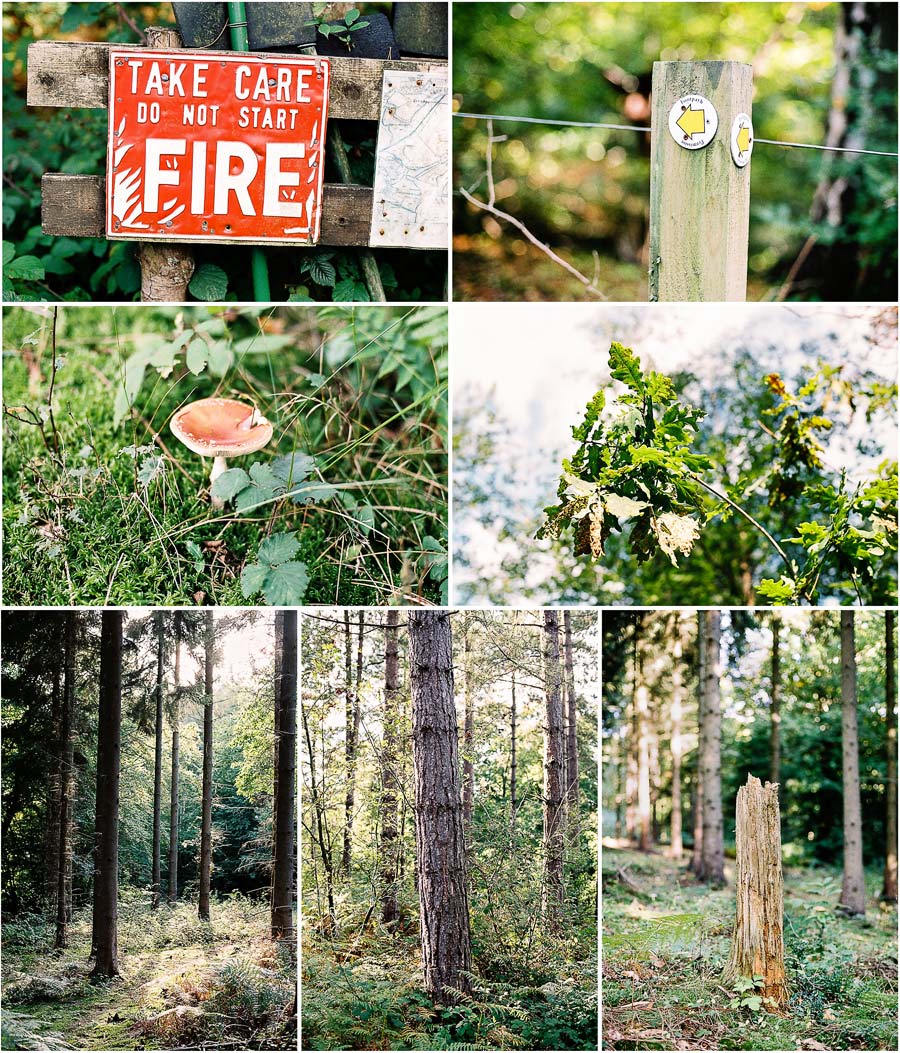
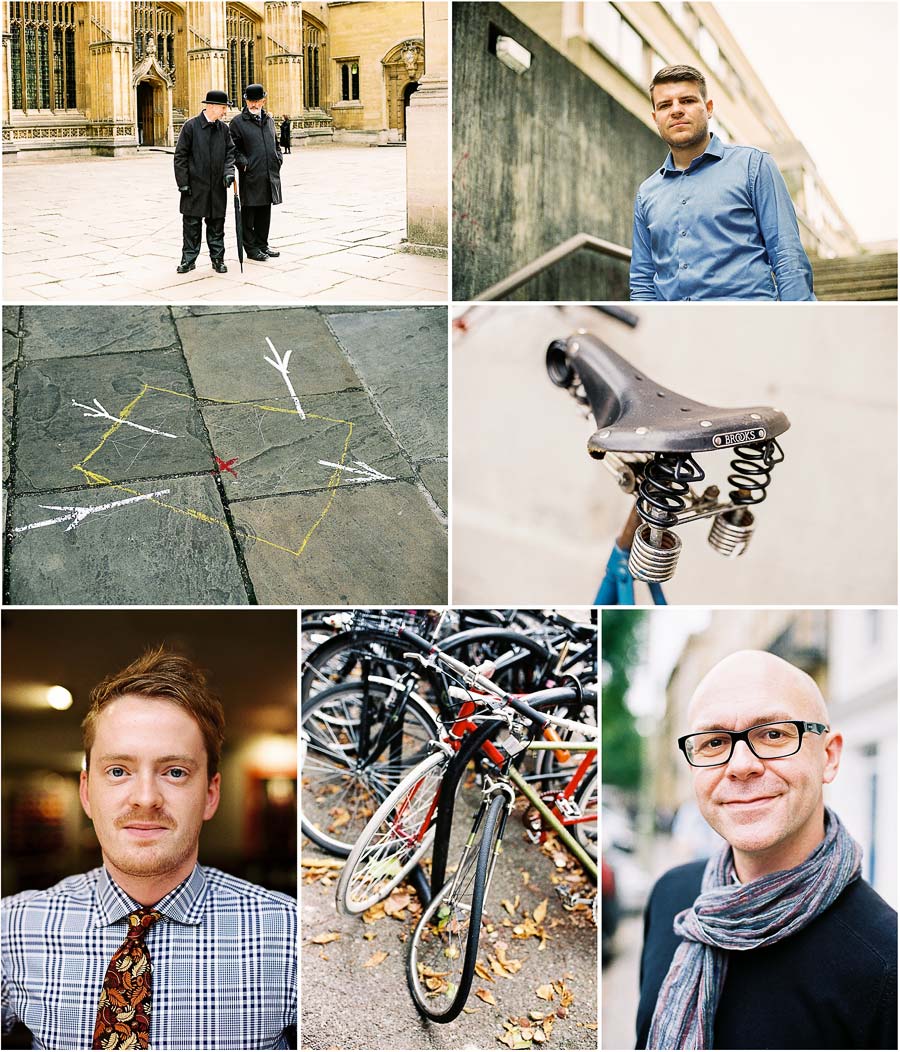
Posted in Equipment, film, Oxford, Portrait | No Responses »
Tags: 35mm, agfa, film, fm2, nikon, oxford, people, portraits, poundland
Monday, September 30th, 2013
The first roll through my Rolleiflex Automat 3.5 (75mm Tessar) that I shot during my lunch hour. The camera is a joy to use, everything works like a brand new perfectly engineered machine so it’s hard to believe that this camera is from the 1950’s. The minimum focussing distance on Rollei TLR’s isn’t all that good so I also bought a set of close-up lenses which I used on some of these shots. There doesn’t seem to be any reduction in image quality that I can tell. I’m going to enjoy using this camera a lot more.
[Tech info:] Rolleiflex Automat 3.5 loaded with expired (2003) Kodak Tri-X film, processed in Kodak Xtol 1+1 for 8 mins.

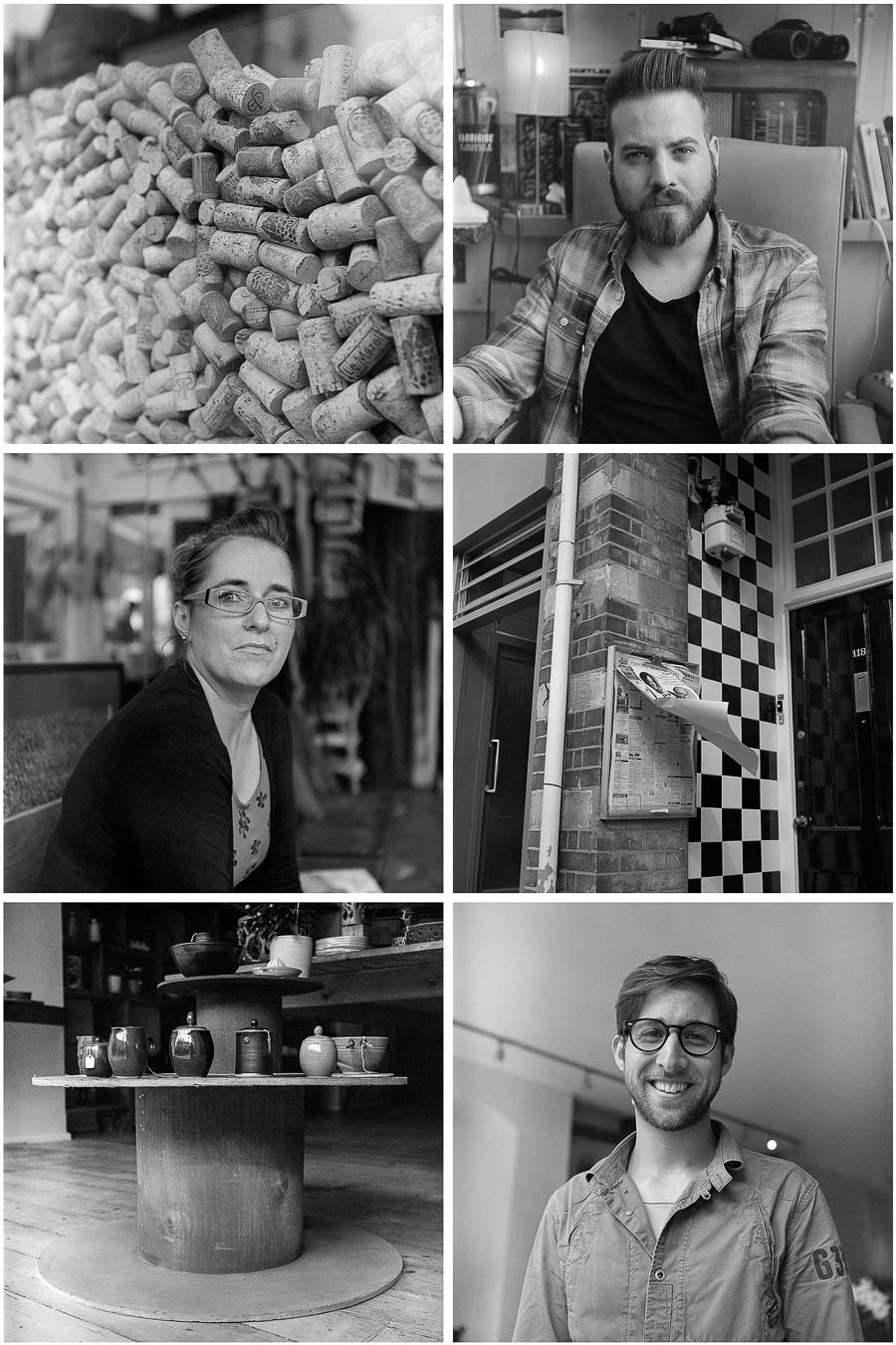
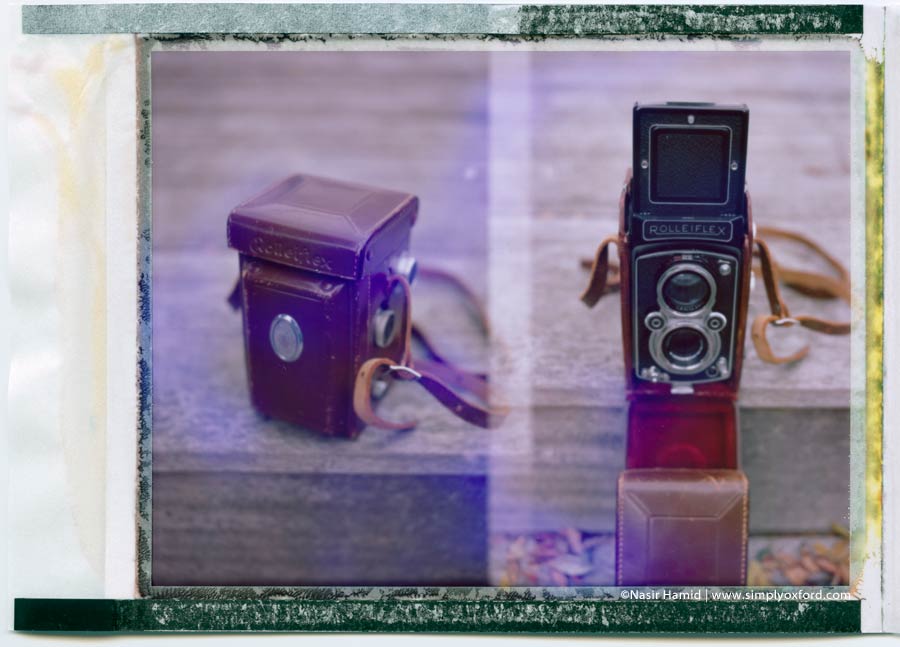
Posted in Equipment, film, Oxford, Portrait, Street portraits | No Responses »
Tags: 6x6, automat, black&white, diptych, film, oxford, people, portraits, rolleiflex, Tri-X, xtol
Tuesday, September 17th, 2013
Some images I made at the Thursday Gloucester Green market to test out my Rolleiflex twin-lens camera. I don’t often go to this market but I think I might change that because there are lots of interesting stalls and people there. My Rolleiflex seemed to attract a lot of attention, I’m not sure if that’s because of the name written on the front in large letters or because it’s a twin-lens but I don’t mind chatting to people about it. The lady in the bottom images was very nice to chat with and I think she has great style, she used to work with photographers as a stylist and it was her stall of vintage goodies that caught my eye because it was so well laid out (the two middle images). Regular visitors to my blog might recognise Martin in the top two images, he features in quite a few of my blog posts when I have a camera, lens or film to test out. He used to play in a local rock band named Targa who were big in the 1980’s and a little known fact is they were the first band to play live on the opening night of Oxford’s ice-rink. The word around the camp fire is there could be a new band forming with a few of the original Targa band members but that’s just a rumour at this stage.
[Technical info:] Rolleiflex 2.8F Planar, 80mm lens, Ilford FP4 (expired) processed in Kodak Xtol.

Posted in Equipment, film, Oxford, Portrait, Street portraits | No Responses »
Tags: 6x6, black&white, film, fp4, oxford, people, portraits, rolleiflex, tlr, xtol
Sunday, August 4th, 2013
Now that I’ve got a batch of C41 colour film chemistry mixed up I decided to use some large format colour film this week which I don’t usually get to use. My go to 5×4 camera tends to be a Speed Graphic because of its built in shutter and the choice of old lenses this allows me to use but the film I wanted to use has an ISO rating of 12 which means it needs a ton of light and the Speed Graphic doesn’t have a shutter speed slower than 1/30 so I ended up using my Wista Field camera which is a lot lighter and a joy to use. I bought my Wista brand new in 1990 and it’s still going strong. Back then it was a magnet every time I used it on the streets and it’s still the same now although the questions people ask me now are different, for example a common one is ‘can you still get film for that?’ The answer is yes.
These images were all made on film that isn’t designed to be used outdoors, it’s meant for duplicating existing film with the use of an enlarger and a tungsten light source but I’ve found that it works nicely outdoors. The Top image of the Ashmolean Museum and the left hand shot of the Triumph motorbike were made with Fuji slide duplicating film that expired in 2011 and the other four shots were all made with Kodak internegative film that expired in 1991. I’ve posted the two motorbike shots side by side for a comparison between both film types. The Fuji film is designed to be processed in E6 chemistry to give a positive transparency but here I’ve cross-processed it in C41 chemistry to see what would happen. I’m pleased with the results. Next I want to try using it for a portrait. Any volunteers?
[Tech info:] Wista field 5×4 camera and Schneider 180mm and 90mm lenses. Kodak inernegative and Fuji CDII slide duplicating film, both exposed at ISO12.
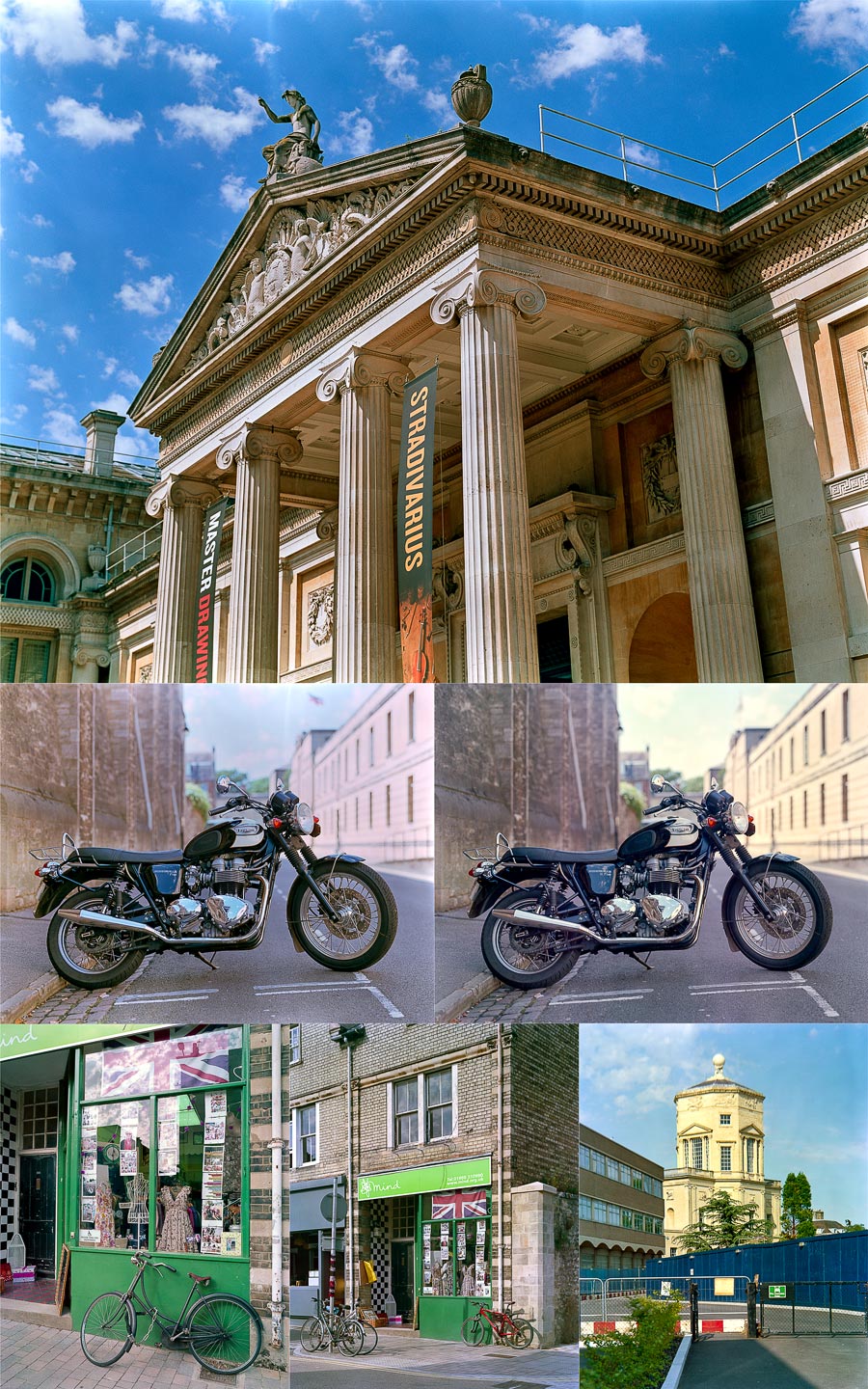
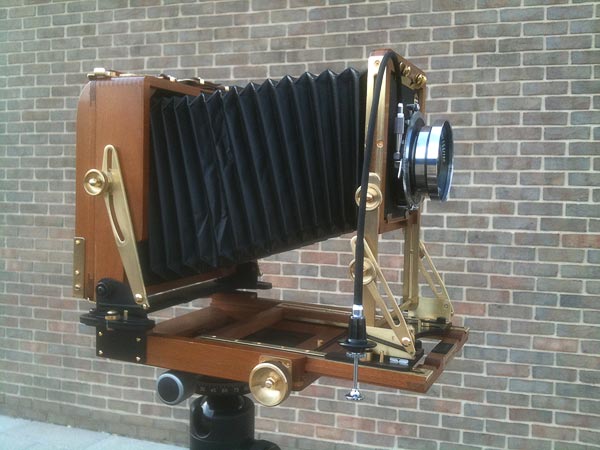
Wista Field 5×4 large format
Posted in Equipment, film, Oxford | No Responses »
Tags: 5x4, c41, cdii, film, fuji, oxford, summer, wista, xpro
Monday, July 15th, 2013
These images were all made with Kodak inernegative film that expired in May 1991. It was originally designed to make a colour negative from slide film and is tungsten balanced because you are meant to project the slide film through an enlarger onto this film. I bought a batch of this film to experiment with but because it’s effective film speed is very slow it needs a lot of light which limits when I can use it. Fortunately we’re going through a spell of sunny weather here in Oxford at the moment so I decided to give this film a try with Tamsin last week. I only took six sheets of film with me and here are all six frames.
[Tech info:] Speed Graphic 5×4, Aero Ektar lens (apart from middle right which was with a Schneider 180/4.5), Kodak internegative film (expired May 1991).

Posted in Equipment, film, Oxford, People, Photo shoot, Portrait, students | 4 Responses »
Tags: 5x4, c41, film, interneg, oxford, people, portraits, students, summer, tamsin
Thursday, July 11th, 2013
This set of images are from my first test roll of some very special 35mm film. It’s Kodak 500T motion picture film that’s designed to be used in movie cameras (the kind that Hollywood studios use) and it’s a favourite film of such movie directors as Christopher Nolan, Steven Spielberg and Quentin Tarantino to name just a few that have used it for their recent movies. I was able to use it in my 35mm SLR because the very clever Brothers Wright in Los Angeles have come up with a technique of removing the remjet layer of the film and then spooling it into 35mm film canisters ready for use in a regular stills camera. It’s native ISO is 500 and it’s balanced for tungsten light. Without the remjet layer the film can be developed in regular C41 chemistry just like other colour negative film. For my first test roll I decided to photograph the Giffords Circus performance last weekend and as an additional test I sent the roll off to ASDA with a few other rolls to test out their developing and scanning service. So far I am very pleased with the results.
[Tech info:] Nikon FM2, 50/1.4D lens, Kodak 500T (CineStill) film, developed and scanned by ASDA in Swindon.
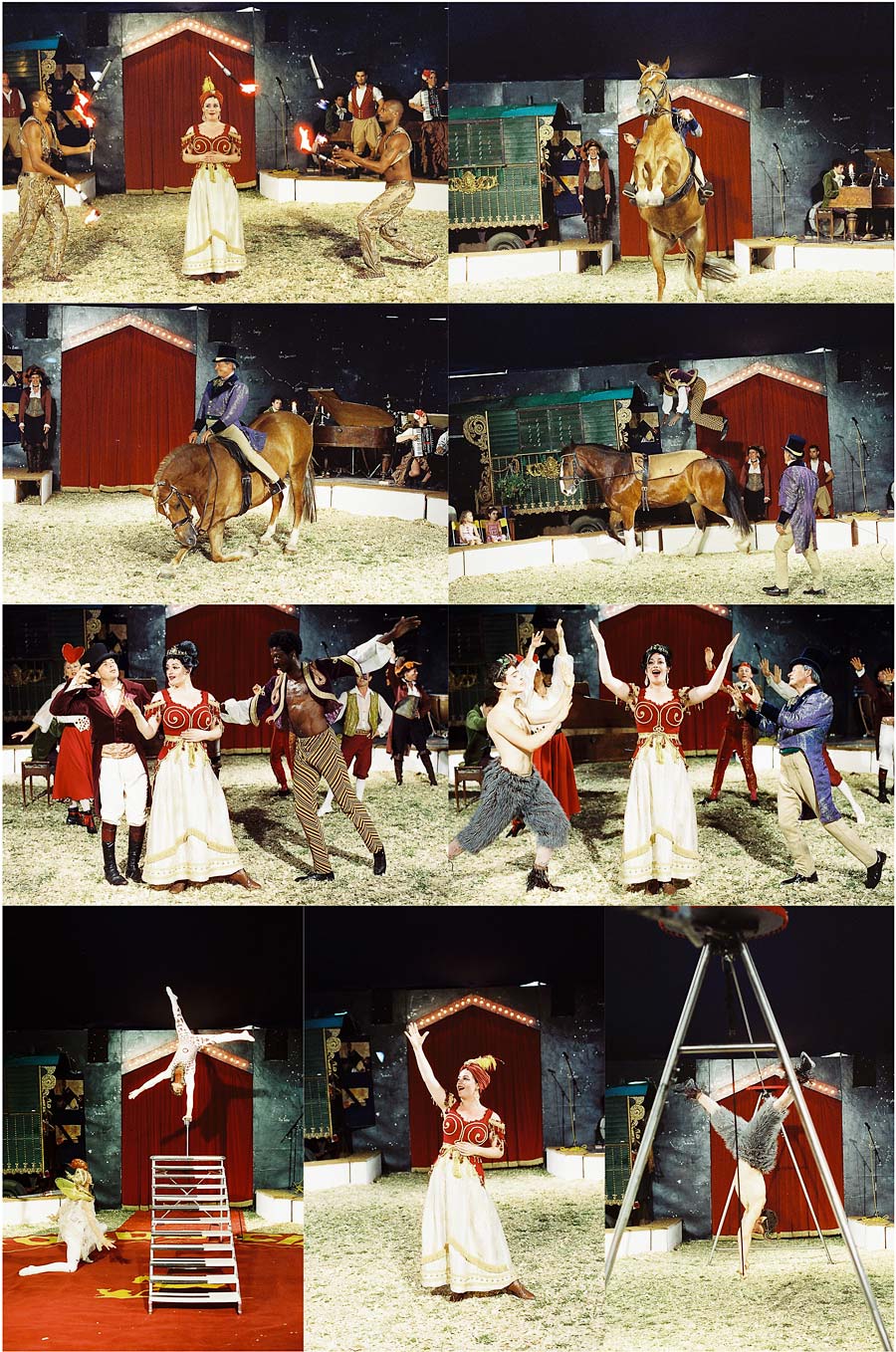
Posted in Equipment, film, Oxford | No Responses »
Tags: 500t, cinestill, circus, film, giffords, oxford
Monday, April 15th, 2013
Here are some portraits I made at the new OWP (Oxford Wheels Project) skate park on Meadow Lane yesterday. This is a personal project to document some of the users of the park because I think it will be great to look back at these images many years from now. I’ve never owned a BMX and I could never balance on a skateboard to save my life so I never found myself visiting the old ramps which is a real shame. I wish I had thought about starting this project years ago because it would be interesting to see how the bikes and fashions have changed over time as well as the riders and skaters themselves.
[Tech info:] Speed Graphic 5×4 large format camera with a Kodak Aero Ektar lens on Ilford FP4, processed in Kodak HC110 (1+31) for 7mins.
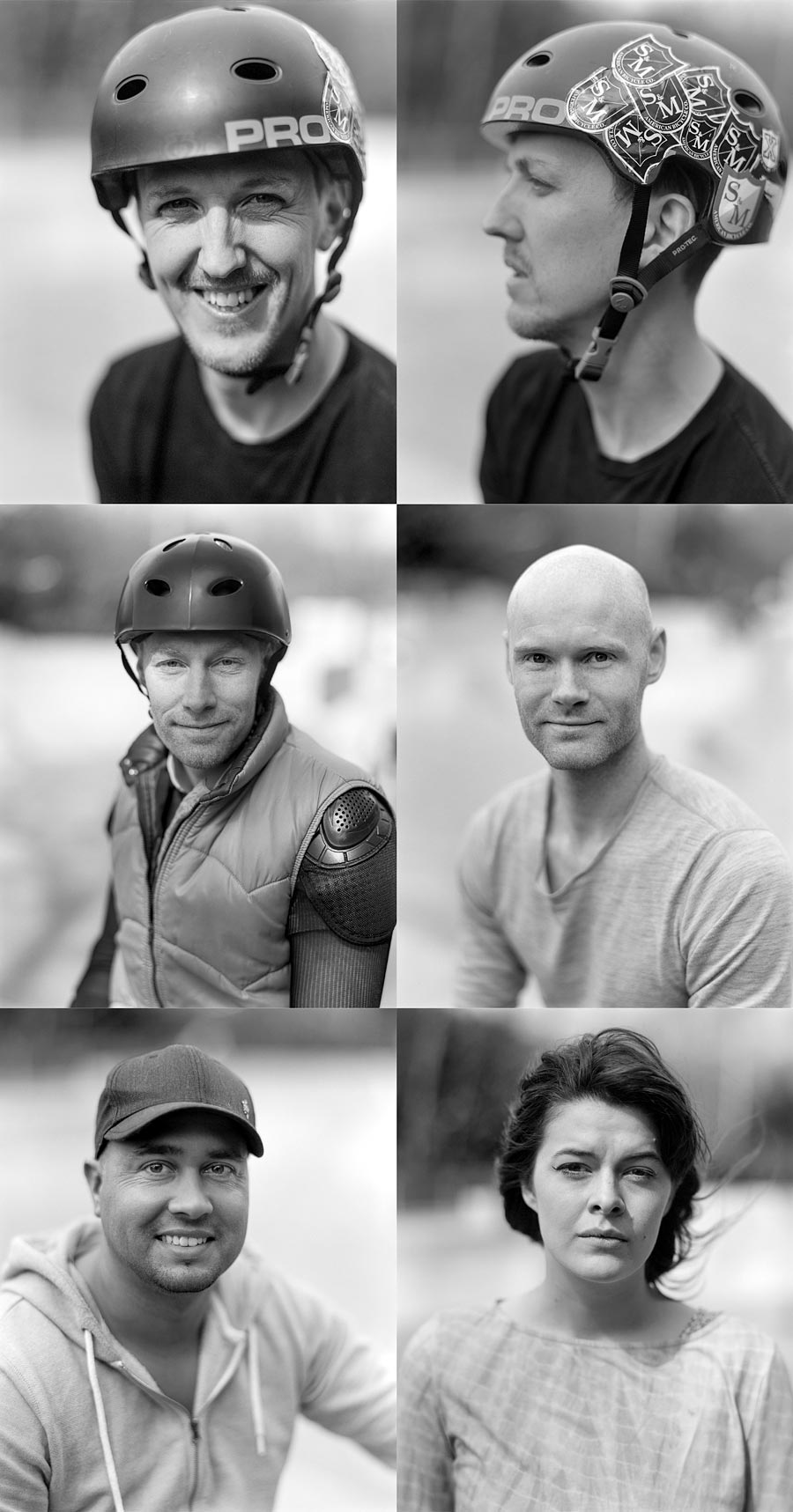
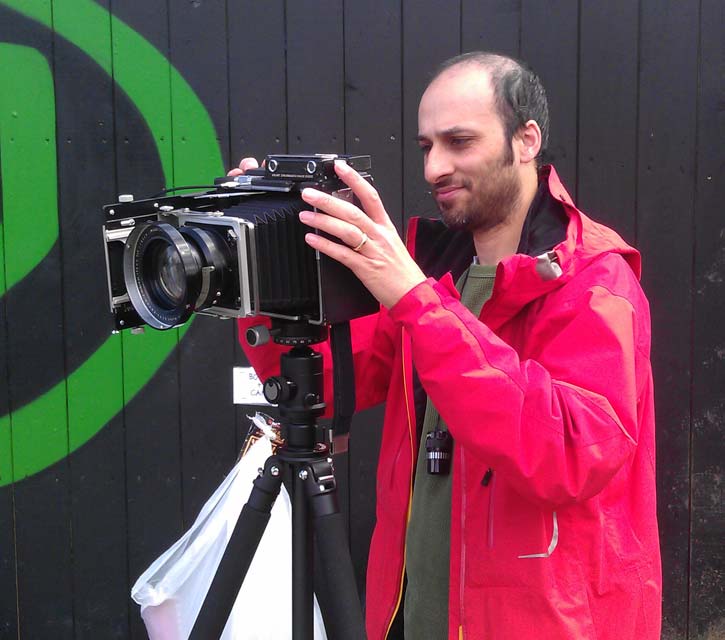
Setup shot - photo by Alex Leech
Posted in Equipment, film, Oxford, People, Sport | 6 Responses »
Tags: 5x4, black&white, bmx, film, fp4, graflex, hc110, owp, oxford, people, portraits
Sunday, March 10th, 2013
Here are some of my experiments with Polaroid passport cameras. I’ve got two and four lens versions which allow you to either have all of the images on the print be the same or you can make them all different. Something I didn’t realise until peeling these prints was that the lenses are fixed to a focussing distance of 1.2m and even though there is a switch on the four lens version to set it to 1.92m it doesn’t actually move the lenses, you’re meant to attach additional lenses (which I don’t have) to the front if you expect to achieve in focus shots. Now I know! You should be seeing some in focus shots sometime in the future.
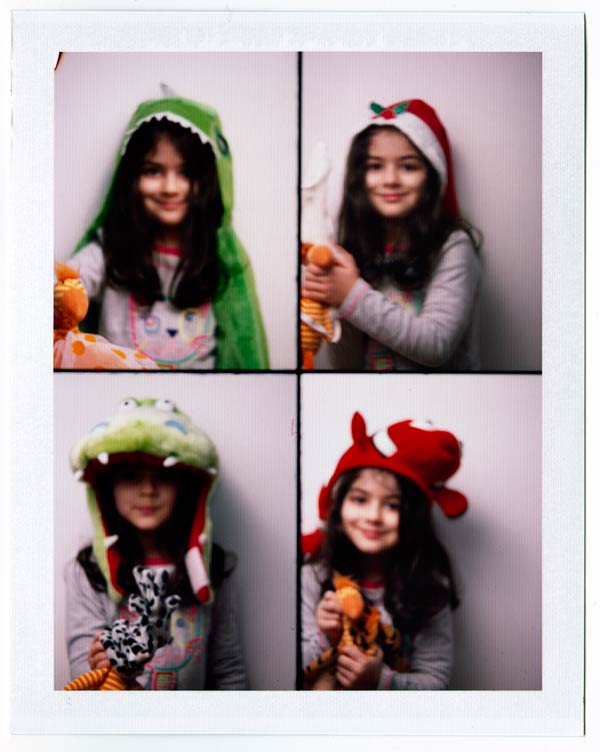
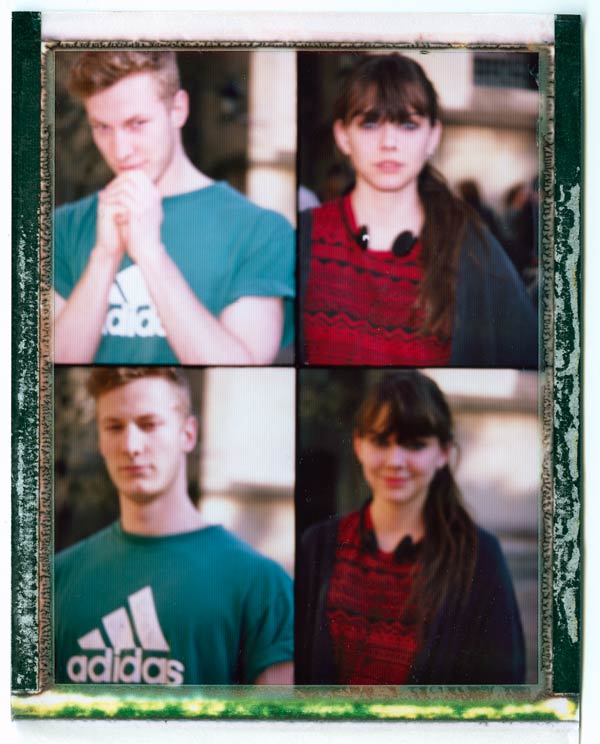
Top two shots are with flash, bottom two are without.
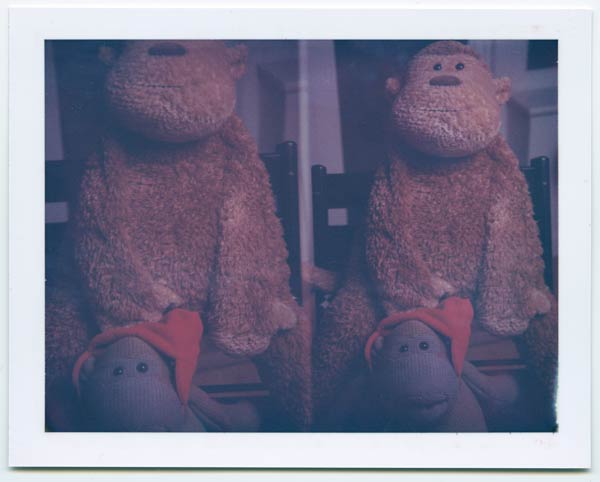
The shot on the left was with an additional lens from a 403R but it has no markings. Shot at 1.2m.
Posted in Equipment, film, Oxford, students | 1 Response »
Tags: fp100c, fuji, fujiroid, passport, polaroid
























